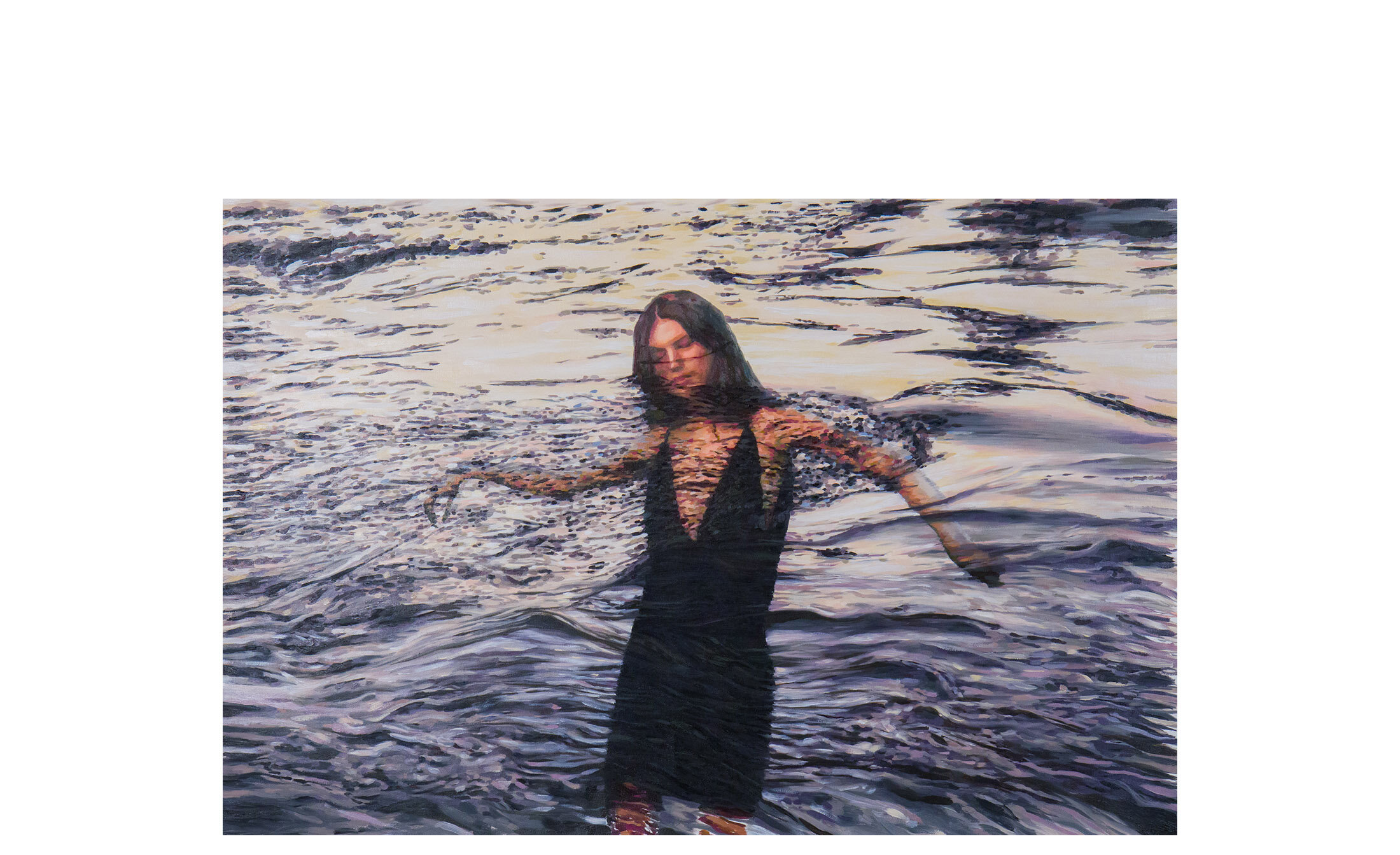SPIRITUS
2018, FILM - STILL PAINTING PROJECT
EXHIBITED AT
GALERIE JAN DHAESE, GHENT, BE
2018, FILM - STILL PAINTING PROJECT
EXHIBITED AT
GALERIE JAN DHAESE, GHENT, BE
The deeper reality is unknowable to the mind and cannot be put into words, it can only be experienced in the heart as the mystery of all that is and that will always be.
Spiritus is the fourth solo exhibition at Jan Dhaese Gallery of works by New York-based artist Emerald Rose Whipple.
The exhibition is comprised of thirteen new paintings and debuts the first film created by the artist. Spiritus follows the exhibition Phædo (April-May, 2017, Jan Dhaese Gallery) by building off of the philosophic thought which confronts the concept of the transmigration of the soul and the curatorial decision to pair natural landscapes with portraiture to illustrate the union of body and spirit. The Spiritus series confronts the idea of alternate planes of existence, primarily in esotericism, such as the physical, astral-ethereal, ancestral, mental and supernatural planE by which everything is linked. The exhibition itself and the film act as an illustration of cosmic order alluding to the natural laws of the universe, and all life.
Spiritus builds off Phædo visually by merging the human form in portraiture and the natural landscape into one image. This is translated in the work by the transparency and opacity of two images, which occupy a single visual plane, which at first glance may appear abstract. The paintings in this series are thus new in subject matter for
Whipple, as this is the first time she has merged both human form and natural landscape. The paintings were drawn from two images, which were then layered on top of one another. The artist then painted the images using the traditional grid technique, applying a mixture of impressionist and pointillist brushwork with elements of realism. This technique experiments with human perception; the initial assumption of the image is abstract, forcing the viewer to look through the veil to find both images.
The Spiritus Film-Still paintings solidify the core themes explored throughout the film, each with their own specific doctrine. The painting “Lindsey Hoover, Water”, depicts the model as the ethereal personification of the primordial element water. Which for Thales was the primary element. She represents both its spirit and its consciousness. The painting “Juan Sebastian Cortes, Sky”, represents the element of air, which was the universal animating principle of the world for the philosopher Anaximenes. This life-giving element was regarded as in some sense living, or even divine. The painting “Lindsey Hoover & Juan Sebastian Cortes, Supernova,” illustrations the silhouettes of the figures embodying the totality of space, it touches on the moment of creation and our place in the greater universe. It assumes one universal entity, that God and nature, and the universe, are one and the same.
The debut film titled Spiritus after the exhibition, showcases double exposure film to create a visual effect similar to the paintings. Whipple’s background in Fashion and art direction has been a primary influence in her art since its genesis; she approached the film as if it were a campaign or editorial for a client. The film is a way of sharing her process with the viewer by depicting what a photo shoot might entail: developing a concept and executing the overall project, creating a narrative with fashion styling, working with models, fashion assistant’s and film or photo assistants.
There are multiple transparent layers depicted throughout the duration of the film. In the foreground models Lindsey Hoover and Juan Sebastian Cortes are seen dancing. The film fluctuates by merging the background with the foreground, allowing transparent layers to be seen through the dancing figures or filling their silhouettes with a collection of landscape video footage including: water flowing, ripples, waves crashing, smoke explosion, fireworks, space Hubble, and storm cloud footage.
The film portrays the unity of all life in an ephemeral depiction of the impermanent nature of life and death, united in one by exploring the themes of Animism, Shamanism, Pantheism, Panpsychism, and Hylozoism. The Spiritus film touches on the ancestral knowledge found in Animism of the mother goddess, depicting the humanness in all living things. We see models Lindsey and Juan portrayed as human beings and watch as they transcend their physical bodies, becoming one with the elements of the physical world then into the expansion and vastness of space.
If we part the veil of appearances and look behind not only the forms of the outer world but also the movement of our own minds spirituality allows us to sense the light of consciousness that permeates everything. Spiritus allows the viewer to see the world in a way that gives it more meaning by encouraging the viewer to look more deeply, finding the vastness everywhere within and without. Plato communicates In his Sophist, that all things must have a psychic aspect of mind and soul through the participation of existence or Being. Whipple’s work encourages seeing the interconnectedness of life, the deeper energies behind things, where the mystery of light envelops everything. We can find the whole in each part of life, the eternal in a moment, the infinite in a point, the entire universe in every object. All that we see is sacred and divine, objects arise and arte dissolved back into light.
Spiritus takes the viewer to the place that touches on meditation or a dream. We can conclude that everything is infinite and united, even though we perceive the world around us as separate, like the forms in the picture plane appear separate to one another, are woven together by the artists hand, similarly to the planes of consciousness, which inhabit the said physical and spiritual world/universe.
Emerald Rose Whipple, NYC, USA, June 2018
Edit by Curator Jan Van Woensel, Pilsen, CZ, June 2018



